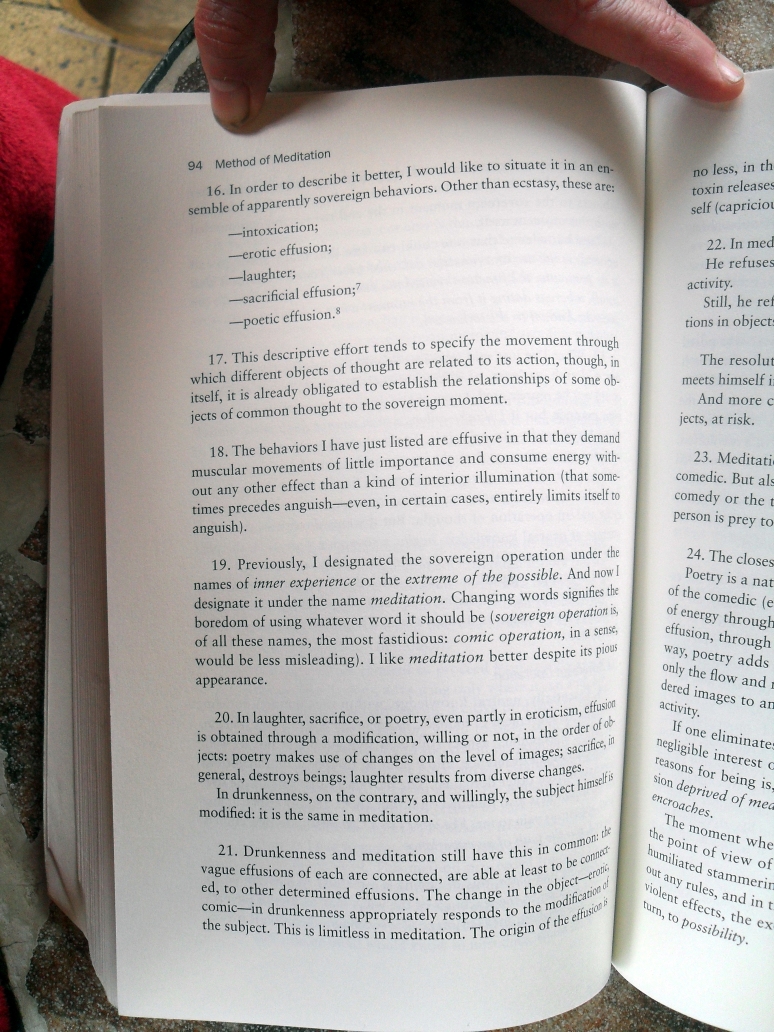Belief or Truth?
All about art
Meet Devil Horse – The Ultimate Halloween Cake
good business
The love that killeth
Exploring Black Sunlight, psychology, politics and history and how these intertwine
Nonknowledge (as per Bataille) is what I call deep subjectivity. This is an open state of being, not seeking to control things in order to feel empowered, but working with what exists and learning to master natural forces. The old style of Rhodesian type knew how to do this and even to attain mastery by being open, but the modern type knows it not.
This notion of the subjective is entirely different to what Judeo-Christian cultures refer to as subjectivity. What they intend to mean is the dross of life that can be readily dismissed. They tend to put women as a group and life experience into this category. These are then subconciously entitled, ‘NOT WORTH KNOWING’.
To only desire and cling to what is proclaimed as already known seems to me to be to embrace the grossest sense of squalor. Why cling to debris like a drowing…
View original post 66 more words
Reflections on Reality
The Big Other as the Expressive Autonomy of Normative Statuses
Lacques Jacan
“In dealing with the big Other, it is crucial to be attentive to the interplay between the anonymous field and the subject impersonating it”.
—Žižek, Slavoj. (2012).
The Žižeko-Lacanian notion of the Big Other has often been invoked as a kind of reproach to all normative statuses, whether they express an autonomous convention or a contingent individual case of difference from the norm (Žižek 2012, p. 76; Žižek 2001, p. 53[1]; Žižek 2000, p. 76[2]). Accordingly, it has been suggested that the mere repetition of assertive gestures can approximate efficacy by making a particular, unforeseen, and ontologically ungrounded interpretation stick (Žižek 2012, p. 370[3]). In the course of this essay, I will offer a reading of individual intentionality and social normative statuses, and the participatory horizon these two…
View original post 2,826 more words
What’s the Difference Between Cultural Exchange and Cultural Appropriation?
 (Related: “Cultural Appreciation or Cultural Appropriation?” and “Wanting To Be Indian“)
(Related: “Cultural Appreciation or Cultural Appropriation?” and “Wanting To Be Indian“)
Jarune Uwujaren explains that there needs to be some element of mutual understanding, equality, and respect for it to be a true exchange.
From The Good Men Project
Cultural appropriation is a term that isn’t often heard in daily conversation, which means it’s inevitably misunderstood by those who feel attacked by feminists, sociologically-informed bloggers, and others who use the term.
Many a white person sporting dreadlocks or a bindi online has taken cultural appropriation to mean the policing of what white people can or can’t wear and enjoy.
Having considered their fashion choices a form of personal expression, some may feel unfairly targeted for simply dressing and acting in a way that feels comfortable for them.
The same can be said for those who find criticisms of the Harlem Shake meme and whatever it is Miley Cyrus did…
View original post 1,481 more words
Secret London: eight London shrines
I wrote this for the wonderful Curiocity, London’s finest pocket-sized trivia-and-map-packing magazine. Issue E, with a pilgrimage theme, is available at all good London bookshops.

Tyburn martyrs
On Bayswater Road at Marble Arch is a small convent, unlikely home to a ‘cloistered community of benedictine contemplatives’, aka nuns. In the basement chapel, the walls are covered with ancient relics – skin, bone, bits of fingernails – from some of the 350 Catholic martyrs who were hanged on the three-sided Tyburn Tree during the Tudor wars of religion. Behind the altar of this ghoulish Martyr’s Shrine is a replica of the Tyburn gallows itself.
Giro, The Nazi Dog
One of London’s best known ‘secret’ sites, this little stone on Carlton House Terrace marks the grave of Giro, beloved pooch of (Hitler-opposing) German ambassador Leopold von Hoesch. Giro died while the German Embassy was at No 8-9 (now the Royal Society)…
View original post 328 more words
Edo Ero Guro
Erotic Grotesque Nonsense (herein shortened to Ero Guro) was a cultural movement which climaxed in 1920s and 1930s Japan, though it was revived in 1960s cinema, and in contemporary art and manga. Eroticism and Grotesque-ry are its key themes, though below the surface its Nonsensical-ity is debatable. This entry examines these themes in fine art before the Taisho period, as a premonition to the movement. Subsequent entries will cover the different revivals, as well as the implications of the digital age, and the potential paradox of photography.
Ukiyo-e (pictures of the floating world) depicted the transient beauty of the landscape, historical tales, kabuki and courtesans. Mediums included painting and the more reproducible woodblock prints, which brought art as entertainment to the masses. Focusing on the grotesque, violent prints allowed viewers to learned about their Feudal history. Focusing on the erotic, Shunga (Spring as a euphemism for sex) prints were very…
View original post 626 more words
FAQ: What is the “male gaze”?
 Before talking about the male gaze, it is first important to introduce its parent concept: the gaze. According to Wikipedia the gaze is a concept used for “analysing visual culture… that deals with how an audience views the people presented.” The types of gaze are primarily categorized by who is doing the looking.
Before talking about the male gaze, it is first important to introduce its parent concept: the gaze. According to Wikipedia the gaze is a concept used for “analysing visual culture… that deals with how an audience views the people presented.” The types of gaze are primarily categorized by who is doing the looking.
While the ideas behind the concept were present in earlier uses of the gaze, the introduction of the term “the male gaze” can be traced back to Laura Mulvey and her essay “Visual Pleasure and Narrative Cinema” which was published in 1975. In it, Mulvey states that in film women are typically the objects, rather than the possessors, of gaze because the control of the camera (and thus the gaze) comes from factors such as the as the assumption of heterosexual men as the default target audience for most film genres. While this was more true in…
View original post 1,165 more words
-
Recent Posts
Archives
Categories
Meta








